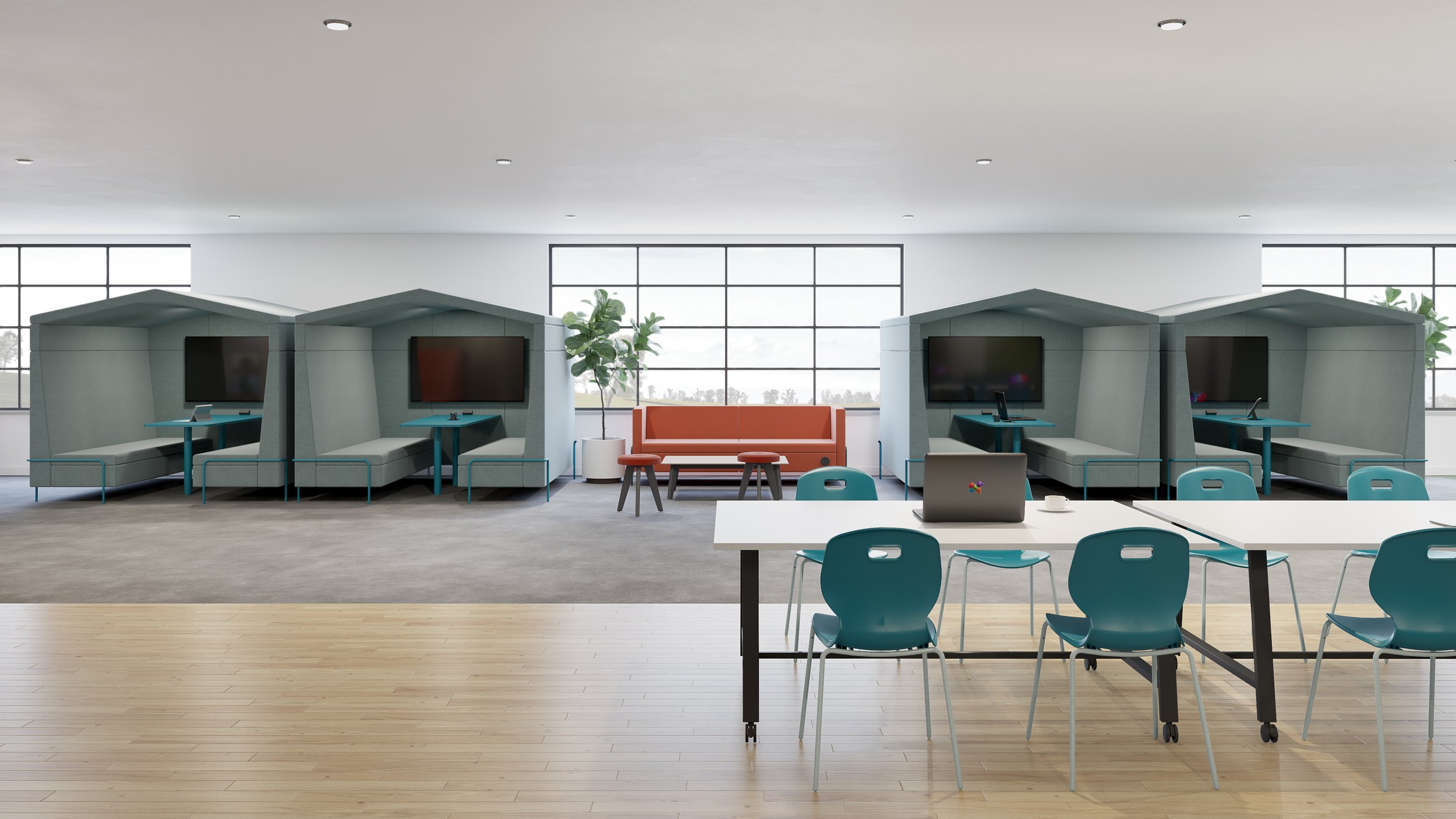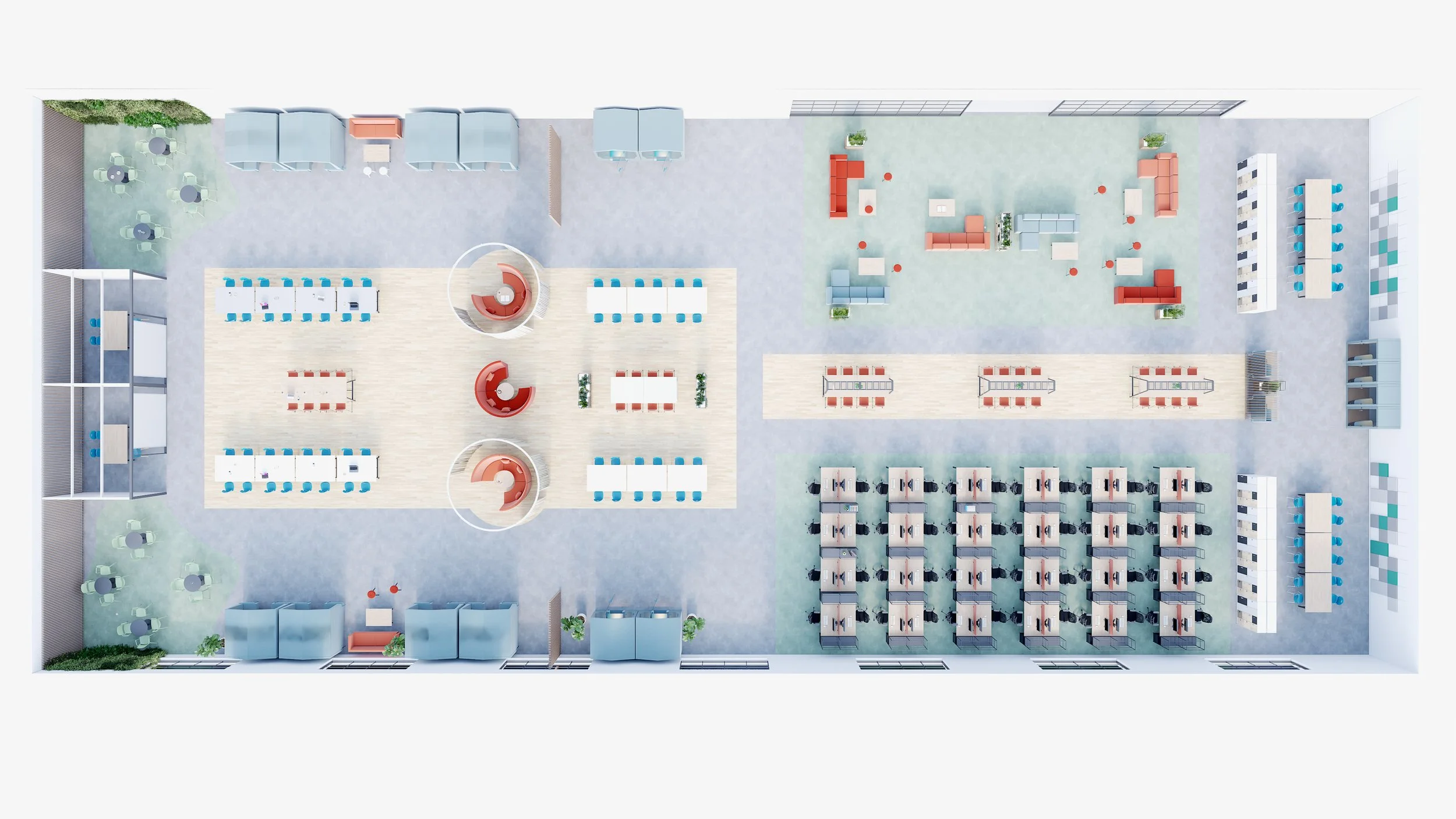Unleashing the Creative Canvas: Designing University Spaces for the Future
In the ever-evolving landscape of workspace design, we find ourselves bidding adieu to traditional norms and welcoming a wave of modernity that breathes life into university spaces.
As we embark on this exciting journey, we focus on three key themes that redefine the academic environment: diversity and inclusivity, increased flexibility, and the green revolution.
1. Bigger Focus on Diversity & Inclusivity
Gone are the days when workspaces were monotonous havens; we're ushering in an era that celebrates diversity and inclusivity. Imagine a workspace where voices echo from different backgrounds and cultures, creating a harmonious symphony of ideas and perspectives. This not only fosters innovation but also nurtures a welcoming environment for both current and potential talent.
Example: Create dedicated collaborative spaces adorned with vibrant artwork representing diverse cultures. Additionally, host regular inclusive events celebrating cultural festivities, ensuring everyone feels seen and valued in our university community.
2. Increased Flexibility in the Workspace
The winds of change blow strongest when we embrace flexibility. Our university spaces are evolving to cater to the dynamic needs of the modern workforce. Forget the conventional desk-and-chair setup; we're introducing breakout spaces, quiet zones, and non-identity desking to encourage a fluid and adaptable working environment.
Example: Picture this - a versatile space where traditional classrooms transform into collaborative hubs. Students can choose between conventional seating arrangements or cosy breakout corners to work on group projects, fostering a dynamic learning environment that adapts to their needs.
3. Green Office: Where Sustainability Meets Creativity
In a world where sustainability is not just a buzzword but a way of life, our university spaces embrace the green revolution with open arms. Picture an office infused with the tranquillity of nature, where eco-friendly products, abundant natural lighting, and lush greenery create an immersive and revitalizing atmosphere.
Example: Integrate energy-efficient systems, using recycled materials in furniture and including indoor green spaces. These elements reduce our environmental impact and provide a calming backdrop for focused academic pursuits.
In conclusion, the canvas of university spaces is evolving, painted with strokes of diversity, flexibility, and sustainability. As we navigate this exciting transformation, let's redefine how we work, learn, and create. The future is not just about spaces; it's about experiences that breathe life into academia and inspire the leaders of tomorrow.
Join us on this vibrant journey as we reimagine the fabric of university spaces – where creativity meets academia, and innovation becomes the cornerstone of our shared future.



